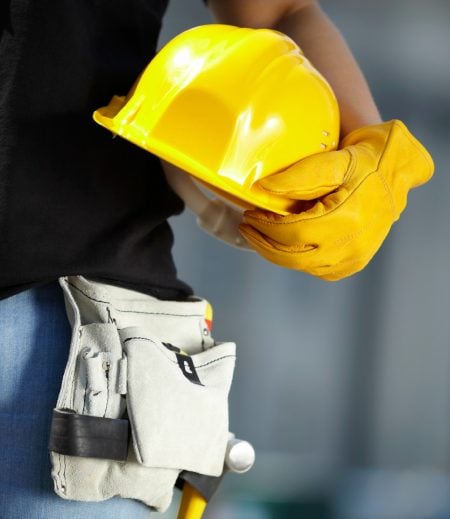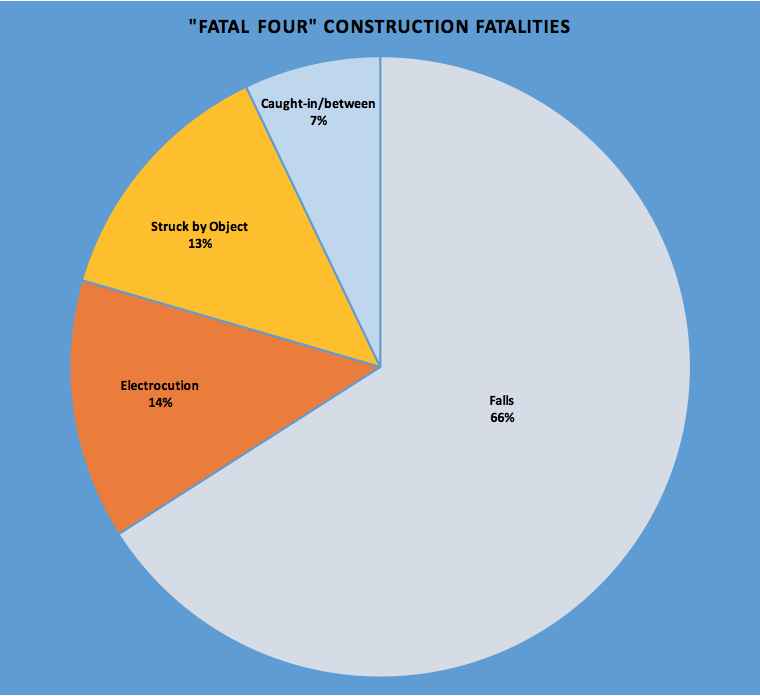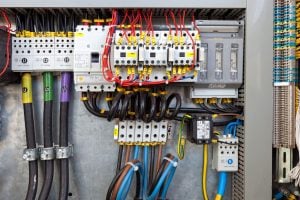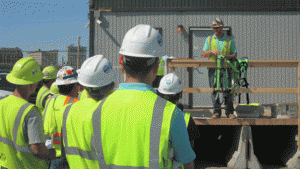November 30, 2016
Construction’s “Fatal Four”, And How to Prevent Them

November 30, 2016


Anyone who knows anything about construction knows that not only is it an incredibly laborious industry, but it’s also incredibly dangerous. Based on past statistics, we’ve been able to narrow down the bulk of safety risks in construction to four often fatal accidents known as the “Fatal Four”. Which, if eliminated, would save about 545 workers’ lives in America every year (OSHA).
The top “fatal four” construction accidents are:

Atlantic Training’s “Fatal Four” Causes of Death in Construction
(*This category includes construction workers killed when caught-in or compressed by equipment or objects, and struck, caught, or crushed in collapsing structure, equipment, or material).
The point here is not to scare you if you work in construction. The point is to inform you that considering we’ve identified the top fatal accidents in construction, you should use that as a cue to delegate your safety efforts toward prevention. Here’s how:
Falls- Falls are not only the leading cause of death in construction, but they’re also the number one cited OSHA standard. Despite being confident in one’s ability to work at heights, a small slip or trip over a cord or piece of equipment can mean the peril of a construction worker. It’s upsetting how many citations are issued to employers for lack of fall protection and heights training for their employees. Preventing falls is as easy as:
Electrocution- While not as prevalent as falls, electrocution is still considered part of the “fatal four” and is also one of the top ten most cited OSHA standards. In the prevention of electrocution, electrical training is the bulk of the focus.

Struck by Object- Anyone who’s been working on the job long enough knows that freak accidents can happen, no matter how many preventative measures are taken. The best way to prevent accidents like being struck by something is to make sure employees engage regularly in safety meetings, even brief ones. It can help promote a culture of awareness and vigilance, so employees can foresee a potential hazard. Heavy equipment operators should be well-trained, especially in pedestrian safety during heavy equipment operation, and all employees should be adorned in visible, reflective PPE.

Bottom line- Even if you’re confident that you won’t get hurt in your construction job, any safety measures you take to protect yourself and your employees from potential work-site hazards can save someone from being seriously injured or killed. It’s easy to get caught up in a seemingly non-threatening routine, but if safety is an after-thought it can be an invitation for danger. Stay safe, construction friends!